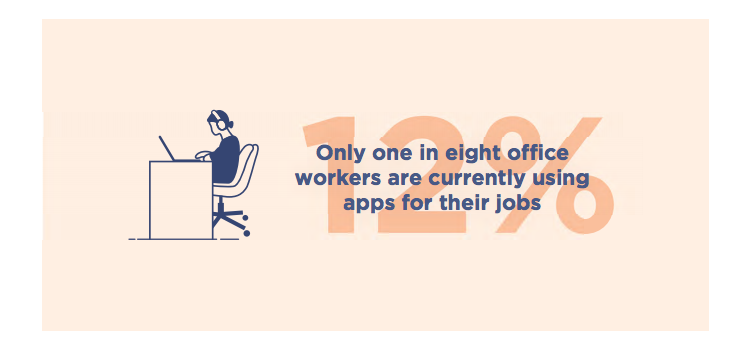
Enterprise mobile applications are living up to users’ expectations when it comes to functionality, but ArcTouch, a mobile app design and development company, found applications are missing the mark when it comes to design and other factors that make for a solid user experience.
According to Adam Fingerman, CEO and cofounder of ArcTouch, only 12% of the 4,000 U.S. office workers screened said they are taking advantage of enterprise mobile apps in the workplace, but at the same time, they are generally underwhelmed by their current app experiences.
While there is clear growth on the mobile front, there appears to be a missed opportunity for work-related applications. What surprised ArcTouch was the low amount of people who actually have access to mobile apps provided by their employers, and what concerns Fingerman is that “there’s clearly a layer of delight missing in the work app experience.”
(Related: It’s a mobile-first world when it comes to apps)
This missing layer, he said, can lead to lower app usage over time, and from an organization’s perspective, it can become “troubling” when measuring the ROI of an application.
“The problems often aren’t the app concept, rather the lack of execution,” said Fingerman. “If organizations invest more upfront in user experience design, usage might be higher. And then when it comes time to measure the value of that app (the ROI), it becomes a much different picture.”
Respondents agreed that enterprise apps increase their productivity, but they also responded that their most-used app experience isn’t “intuitive.” Only 13% describing their experience as “elegant.”
Part of the reason why these applications are not living up to users’ expectations has to do with how companies approach internal projects, according to Fingerman. He said the way to become successful is to shift the focus to the user, so building a functional app or porting a web service to a phone or tablet just isn’t going to cut it anymore.
“Even for employee apps, organizations need to have experts in a mobile-specific user experience,” said Fingerman. “That’s the layer that will separate the good work apps from the failures—and that’s where consultants and companies like ours can make a big difference.”
Fingerman said that there is some progress being made when it comes to mobile platforms in the enterprise, but the challenges that exist are not just the developer’s problem. There is also a design challenge that stands in the way.
He highlighted development platforms like IBM MobileFirst and Xamarin, which make it easy to develop user-friendly applications. Fingerman said it’s also easy to build an app that is “uninspired and doesn’t get used,” which is why teams should consider how the application will interact with the user on different devices. Good user experience design is what “separates the good apps from the bad ones,” he said.
There are two other points that Fingerman sees companies failing to address when they jump on the mobile bandwagon. One is that companies are failing to understand the user problem upfront. To solve this, companies should consider taking some “sound strategy and some solid research,” he said.
Companies also tend to think that once an app is built, the work is done. Really, the work has just started, said Fingerman, and after an app ships, companies should analyze its performance and optimize it so it lives up to its promise.
“Don’t just build an app. Build an app that people need,” he said.






